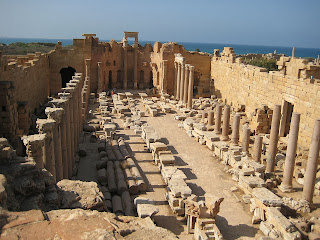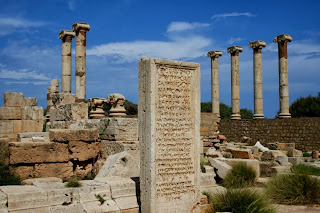The Ubari
Sand Sea is a widespread area of towering sand dunes in the Fezzan region of
south-western Libya. However, around 200,000 years ago, this was an extremely
wet and fertile region with plenty of rainfall and flowing rivers. These rivers
fed a gigantic lake, even the size of Czech Republic, in the Fezzan basin
called Lake Megafezzan. Well, during the humid temperature the lake stretched
to a maximum size of 120,000 square kilometers. As the climate changes, it
cause the region, a part of Sahara, to slowly dry up and between 3,000 to 5,000
years ago. But the lake evaporated away into thin air. Hints of this great lake
still exist nowadays in the form of micro lakes dispersed among the towering
dunes like wet patches in the desert. Presently there’re about 20 lakes in the
Ubari Sand Sea - beautiful palm-fringed oases that appear like anomalies in the
harsh desert environment. Among the most attractive of the lakes are Gaberoun
and Umm al-Maa (the Mother of Water). It is located besides the ruins of the
old village; Gaberoun is the place, which one tourist mostly visits. There is a
rudimentary tourist camp on the shore, including an open patio, sleeping huts,
and a souvenir shop. There’re two more lovely lakes – “Umm al-H'isan” (the
Mother of the Horse), also spelt as Oum El Hassan, which is located north of
Gaberoun; and another one at Tarhouna, about 11km from Umm al-H'isan. These
are, however, rarely visited by tourists.
The Ubari
lakes are very salty; due to the fact that these lakes are being incessantly
evaporated and have no rivers replenishing them (Libya has no persistent rivers
that persist year-round. This has caused the dissolved minerals in the lake
waters to become concentrated. Some of these lakes are nearly five times
saltier than seawater. Some take on blood-red hue from the presence of
salt-tolerant algae. Although the Ubari Lakes are not exactly shallow, ranging
from 7 to 32 meters in depth, they’re at the risk of drying out. The waters in
Sahara’s underground aquifers, that were deposited tens of thousands of years
ago in much wetter times, is limited and this is now declining, however thanks
to the increasing use of aquifer water by growing human populations. Almost
thirty years ago, the Libyan government accepted an ambitious project called
“Great Man-Made River”, aimed at drawing water from the aquifers beneath the
Fezzan region via a network of underground pipes to make the desert bloom. The
project, if successful, will drain these enormous reserves of fresh water in
just 50 to 100 years.Source: Amusing Planet

































































